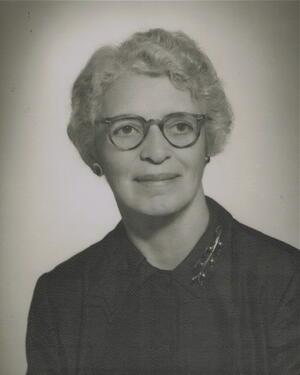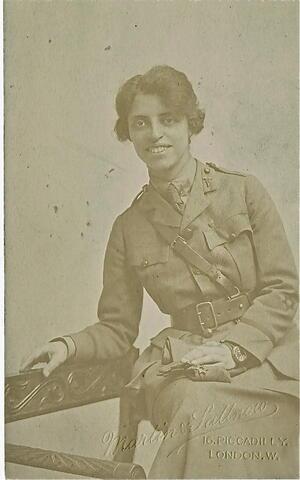Meet Sophie Rabinoff as the Camera Saw Her
Sometimes at JWA a story insists on coming to life.
The article on Sophie Rabinoff in our online Encyclopedia was a good scholarly representation of the pioneering physician's life and work. But no photos accompanied it; nothing helped lift it off the page. A few weeks ago, her great niece Jennifer Arnold contacted us to say that she had some photos of her aunt and wondered if we could add them to the article. I told her that we would be happy to, and she kindly scanned and sent them to me.
I opened the first attachment. The photo is typical of the late 1940s. It was taken before Dr. Rabinoff was made a full professor at New York Medical College, where she served as director of the Department of Public Health and Industrial Medicine. Like subjects in most formal portraits of the time, she does not smile or look directly at the viewer; she wears a conservative suit, adorned only by a demure leaf-patterned pin. I thought it was perfect to introduce the article. There is Dr. Rabinoff, I thought, respected physician, calm and composed before the camera.
The second photo was taken many years earlier. Here is Sophie in London in 1918, aged 30 but looking much younger, in uniform, posing for a photographer on Piccadilly, a street I know well. She holds her hat, on which is pinned a small Star of David, the symbol of Hadassah that is also embroidered on her left sleeve. Here is Sophie, the only woman physician sent by Hadassah founder Henrietta Szold to Palestine as part of the first American Zionist Medical Unit. Here is the woman who founded Palestine’s first clinic for the treatment of Jewish and Arab children.
The last photo really caught my attention. How could it not? It was taken a few months later in Jerusalem. Her pose is remarkably similar—the same smile, the same direct look, but the setting and dress could not be more different. Dressed like a Palestinian woman, she smiles as she leans casually against a woven basket, making direct eye contact with the viewer. Her garments are richly textured with vivid patterns. On the back of the photo, she had written, “From Sis, with lots of love. The Arab has not yet materialize[d]." To her family, Sophie was “Sis.” But who is the Arab she writes about? Sophie’s smile seems to hold the answer.
These two photographs bring this capable young woman to life for me. In her later career, she would win recognition for her leadership in the fields of public health and preventive medicine, but here she smiles as she begins her adventure—confident, proud, playful. “Sis.”
Thank you, Jennifer Arnold.








